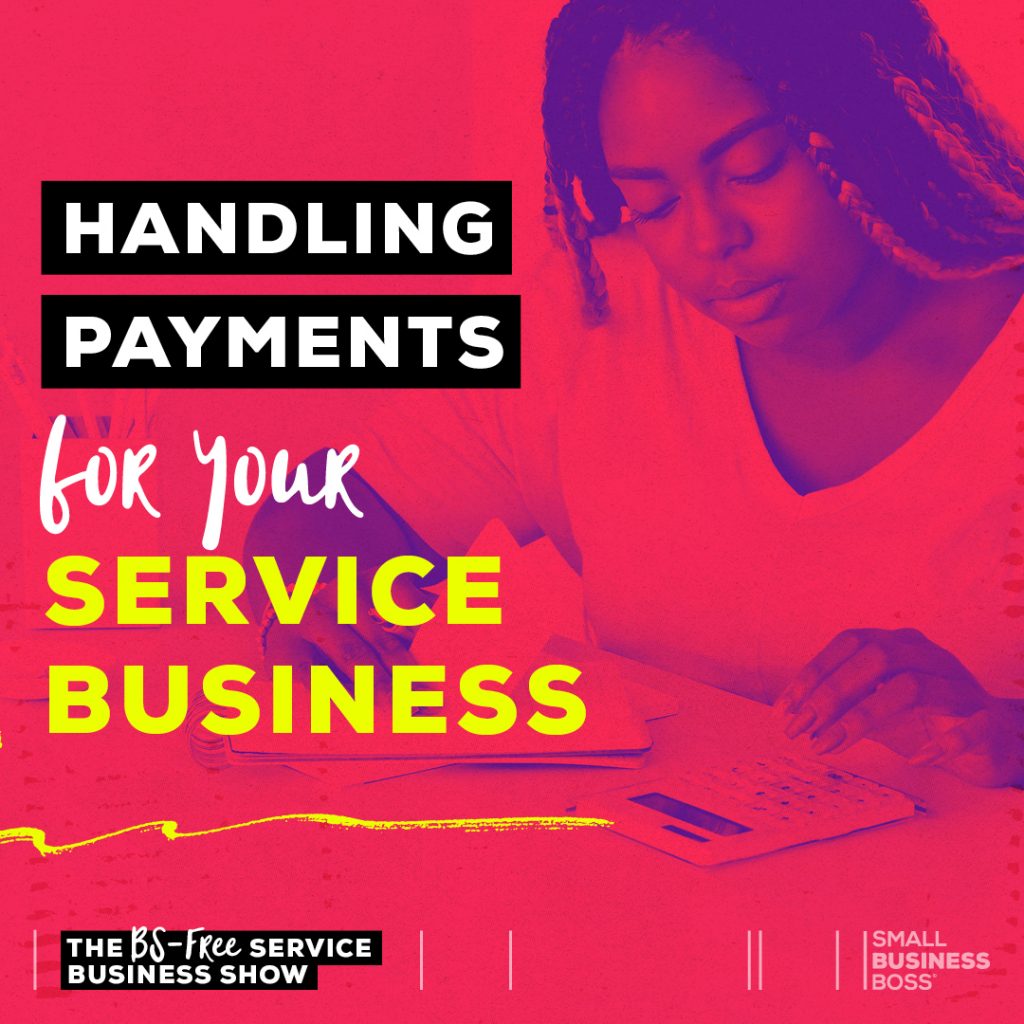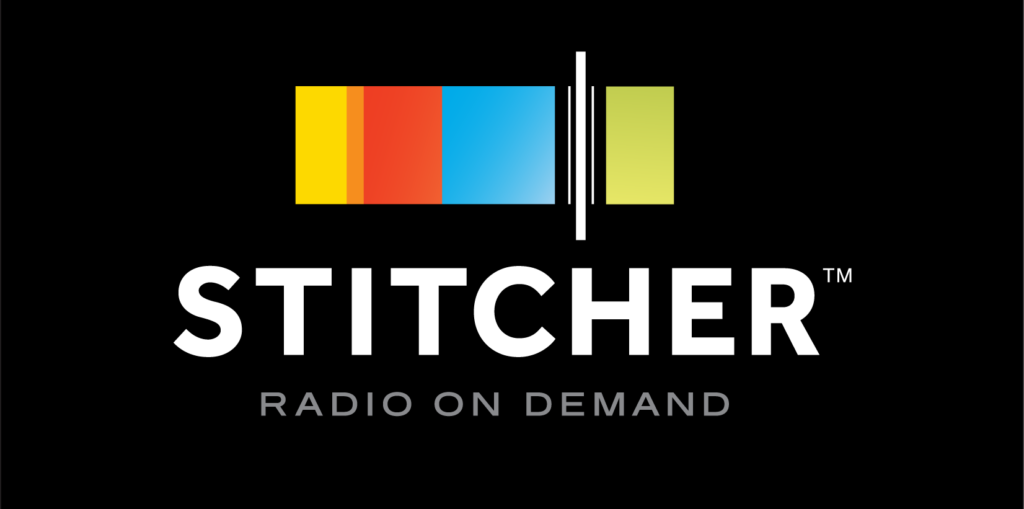
Handling Payments for Your Service Business
How you deal with money is a big part of your business and while we talk about making it, we don’t often talk about how to handle collecting that money. In today’s episode, we’re talking about all things payments including payment terms, options for receiving payments, payment plans and so much more.
This episode is going to finish up the series we started at the end of 2020 on sales and money. But make no mistake, we’re never going to stop talking about money or sales here on the show.
To wrap things up, I wanted to talk about how to handle payments in your service business, as our ability to get paid impacts so many factors in our business. It would be really easy to just think it should all be “pay me upfront” and that’s it, but that’s far from the reality for most of us.
Especially as there are so many variables when it comes to payment terms depending on who your client is, the norms in that industry and so much more.
Picking the Right Payment Terms
A big factor to consider in all of this is who your client is. How I deal with payments for my clients for Small Business Boss is very different than on the agency side, which makes total sense as one is a Business to Entrepreneur or as I call it, B2E business, and another serves true B2B corporate clients.
Within the B2E market, payment terms tend to favor the seller, with a big focus on paying before services are delivered. Typically, things are paid for in full, or they’re done via a series of payments. For service providers, this typically is a payment upfront at the start of the month, or on a set schedule.
As a business owner, this type of payment structure is much simpler and easier to manage, especially as when you’re providing services, you’re delivering throughout the month, or on the agreed upon schedule.
Whereas in the B2B market, it’s normal for projects to be paid for after work is delivered. The payment terms favor the buyer.
A standard payment term in the B2B market is Net 30, which means if I do work starting Jan 1st, then invoice on Jan 31, I’m not seeing money until the end of February, beginning of March. I can tell you from experience, this can be pretty hellish as you’re waiting to be paid.
Once I saw how payments were handled in the B2E market, I brought that same energy to my agency clients as a way to mitigate risk. In my initial discussions with clients, I ask them what their typical payment terms are, and I negotiate with them so we get paid faster. By having a policy that requires upfront payment, I’ve been able to cut what would be 60 days of waiting for payment down to five or six.
In some cases, Net 30 is a corporate-wide requirement, in which case I work with them to issue invoices at the start of the month vs. at the end of the month like most of their agencies. The result, I get paid at least 30 days sooner than I would if I just took their payment terms.
With both audiences, the goal should be to find a solution that allows you to not incur major risk to serve your clients and get paid sooner.
Finally, one thing I’ve done across all types of clients is set a minimum engagement under which things must be paid for in advance. This varies, but it’s typically a small enough number that the client trusts us to pay in full, upfront, and we’re not left wasting cycles chasing small amounts of money.
Collecting Money from Your Clients
When it comes to actually getting paid, you need to make it simple. There’s nothing that’s a bigger turnoff to me then when a vendor makes it hard to pay me. Over the years, I’ve been asked to do all kinds of weird things, and frankly, if I have to do something more than enter a credit card, we’re probably not going to work together again.
For me, this is a client experience issue, so make it simple for people to give you money. Don’t create layers of complexity to save yourself processing fees, because from the client’s perspective, it’s a hassle, and it may take longer for you to get paid.
As for how to actually collect money, that will depend on the client and your industry, but my preferred methods are:
- Wire Transfer: Most of our agency clients pay us using wire transfers and it’s their preferred method of payment If you work with corporate clients ask if ACH or Wire Transfer is an option. It saves processing fees and money is in your account quickly.
- Credit Card: I use Stripe to process all credit card transactions, and it’s quick and easy for everyone as it’s integrated with Harvest and Teachable. The cost of processing is just a cost of doing business.
- PayPal: We have a couple clients, including one corporate client, that pay us using PayPal, and it’s come a long way. Again, it’s integrated with Harvest and Teachable, and I usually have money in my bank account within 24 hours.
Notice I didn’t say payment by cheque is an option? This is a deal breaker for me at this point, and any new clients will not be provided this option. After what I dubbed “cheque gate” in late 2019 that involved a seriously late payment which then bounced, all kinds of fees attached to the bounced payment and far too much energy and drama, I’m over cheques.
It’s 2021. If you can pay me by cheque, you can pay by wire transfer. Period. I don’t want paper money unless it’s a giant one from winning the lottery.
Offering Payment Plans
Payment plans are a big part of how things are sold in the online business space, and from my point of view a lot of the practices around them are, well, questionable.
If you’re listening to this, you’re likely not selling courses, but you may have been influenced by a barrage of messages about what’s “normal” when it comes to payments.
A common practice is charging more for a payment plan. From a business point of view, it’s positioned as a way to help mitigate risk and manage the cost of administering a payment plan. The truth is, that in many cases, these charges are more about creating an additional source of revenue than the costs of managing failed payments.
For service providers, adding a servicing charge to your payment plan isn’t necessary. As you’re delivering services over the course of a set amount of time, you can mitigate risk with your payments. Plus, you’re usually dealing with a handful of clients, not 100s, so dealing with a failed payment isn’t a major deal.
However, if you’re going to offer a payment plan, be sure that you’re matching up the length of the plan with how long you’ll be working with someone. Don’t plan on working with someone for three months and then having a nine month payment plan, as you’re incurring too much risk.
Now, I’m going to let you in on a little secret. On the Small Business Boss side of things, I actually don’t encourage people to pay in full. Payment plans allow me to have steady cash flow on an ongoing basis.
If someone wants to pay in full, I don’t discourage them, but my preference is a payment plan.
There’s wholly too much focus on paying in full as the holy grail in online business. I keep seeing people talking about clients paying in full as if those are the only clients that have value, and that we should require as many people as possible to pay in full.
The goal should be to be of service to our clients, not to make them feel less than for not paying in full, or worse yet, to punish them for not having the resources to do so.
Finally, keep in mind that if you receive payment in full, depending on the amount and your typical cash flow situation, you may want to put it in a holding account and move a portion over every month. That allows for you to manage potential risks should a refund be required or another situation were to arise.
In some professions, like law, upfront payments need to be put into a trust account to protect everyone involved, so this isn’t as out there as it may sound.
Being Mindful of How You Communicate with Potential Clients
Finally, and this isn’t about payment terms per se, but when it comes to payments and how we communicate about them, we need to be mindful.
I’ve noticed a trend with B2E businesses, particularly in the coaching and course market where how they speak about their potential clients, making investments and payments is distasteful. I wanted to share this as we need to be proactive and not start letting this creep into our service-based businesses.
We need to be thoughtful in how we speak to our potential clients in our sales copy, our marketing, our sales conversations and more. Choose your words carefully and think about how they may make someone feel.
How would you feel on the receiving end of an aggressive “this is not for you if…” section of your sales page. What about if you considered working with someone, but you weren’t quite ready yet and they made you feel less than?
To build trust with potential clients, you need to treat them with respect and you need to honor their timeline. By doing that, you’ll have clients that trust you from day one, making your working relationship that much easier.
Aim to Balance the Buyer and Sellers Needs with Payments
When it comes to payments, from the terms to how you collect money, the ultimate goal should be to find ways to reduce friction on both sides. As a service provider, you don’t have to be a doormat and agree to whatever your client wants. On the flip side, you need to be fair and of service to your clients so you’re not making it hard to work with you, raising red flags or totally tanking their trust in you before you even get started.
Links for This Episode
Follow Maggie on IG
How to Get Paid On Time, Every Time


